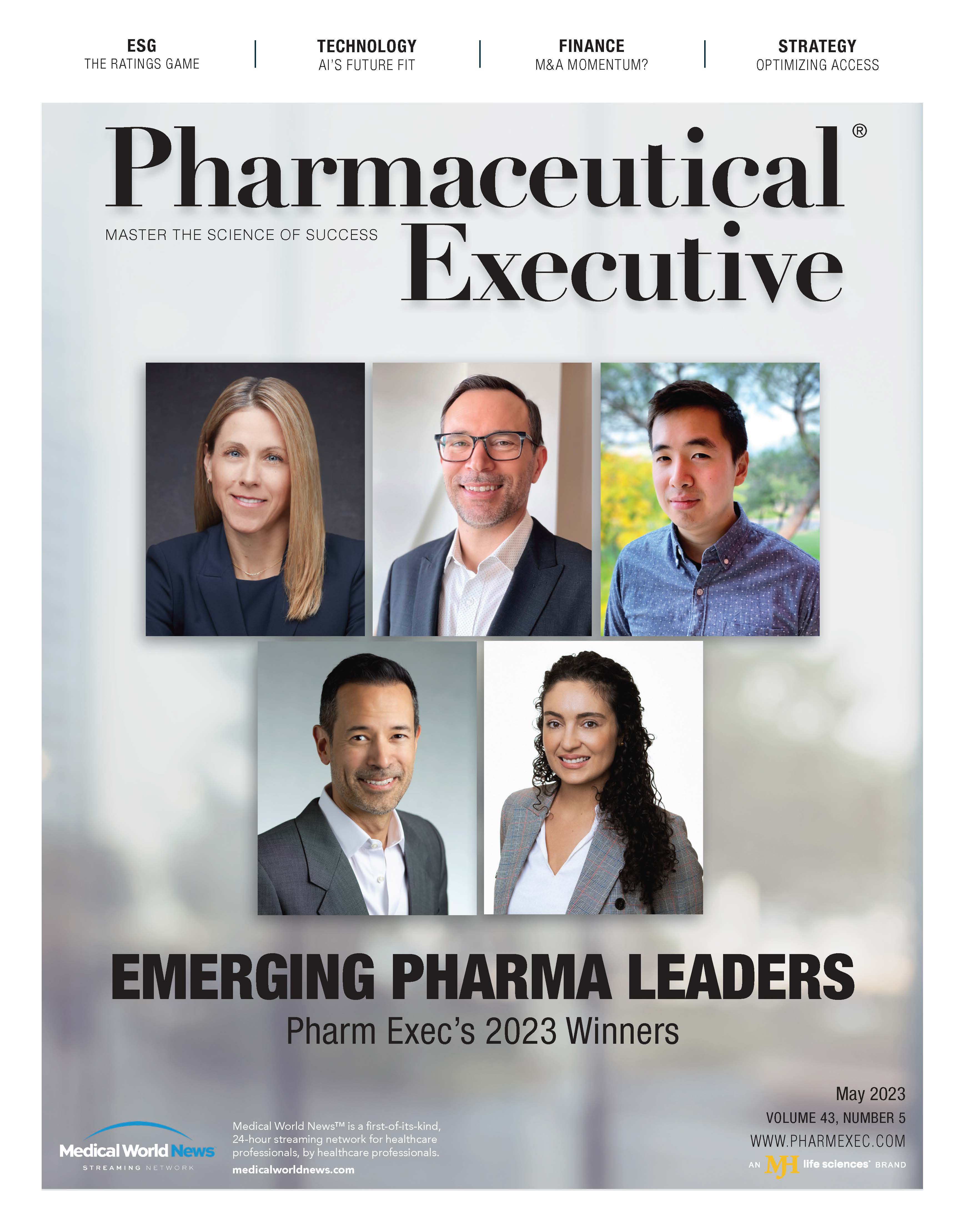- Sustainability
- DE&I
- Pandemic
- Finance
- Legal
- Technology
- Regulatory
- Global
- Pricing
- Strategy
- R&D/Clinical Trials
- Opinion
- Executive Roundtable
- Sales & Marketing
- Executive Profiles
- Leadership
- Market Access
- Patient Engagement
- Supply Chain
- Industry Trends
AI is a Tool, Not a Replacement for Employees
The pluses for pharma are many—alongside experienced workers.
Mike Hollan
Pharmaceutical Executive Editor

Lately, it seems like everyone is either excited or worried about artificial intelligence (AI). Programs like ChatGPT are seemingly able to replicate human writing and speech patterns and can create new bodies of text based on simple (or not-so-simple) prompts. Similar technology is being used to create art, photographs, video, and music. For many, this is an exciting sign of things to come and promises a future where humans won’t have to waste time on menial tasks. Others, however, are worried that these complex algorithms will erase jobs and create further havoc in the jobs market.
AI hasn’t skipped over the pharma industry. In fact, life science companies have been developing AI and machine-learning algorithms for years. These programs are usually used to sort through mountains of information, whether it’s for researchers in clinical trials or healthcare providers treating patients.
I spoke with Stephanie Vasquez-Mostofi in an interview for Pharmaceutical Executive’s sister site, Medical Device & Technology. She is a director of product marketing at Viz.ai, a company that just made headlines for receiving 501(k) clearance from FDA for an AI algorithm designed to detect suspected abdominal aortic aneurysms.
“New technologies are emerging on a daily basis,” says Vasquez-Mostofi. “Ten years from now, I don’t think there will be a single center in the US that isn’t using AI in order to improve patient outcomes. We’ve been live with many early adopters since our first clearance in 2018, and now [more than] 1,300 hospitals have moved in our direction across the globe. This very much has the potential to become standard of care in the future.”
If AI is going to continue to be used more and more frequently, it’s important to understand what exactly the technology is. Clay Wilemon, chief executive officer at 4L Data Intelligence, explains in an interview with Pharm Exec that AI is a term that can be used to mean a variety of different types of programs.
“Saying ‘artificial intelligence’ is a bit like saying ‘vehicle,’” says Wilemon. “I’ve got dump trucks, pickup trucks, SUVs, and Ferraris. They’re all great, but I need different vehicles for different reasons. AI is a very broad category that runs the range from a souped-up Excel spreadsheet all the way to a highly intelligent, autonomous dynamic technology. At its core, AI is just technology being trained to make decisions the way we all would if we had the bandwidth to make all the decisions in the world. It’s important that we always consider what type of AI we’re talking about. Is it highly structured or also unstructured? If it has unstructured capabilities, it becomes a dynamic technology that can go out and identify problems that we don’t know specifically to look for.”
Wilemon cites the area of preventing healthcare fraud, waste, and abuse (FWA) overpayments as an example. AI can enable companies to begin to develop solutions that create a cleaner, higher-integrity environment on a continuous basis.
The main question that seems to be on everyone’s mind when it comes to AI is whether or not it will replace humans in the workforce. When it comes to the life sciences industry, both experts didn’t think that was going to be a problem.
“I don’t believe that artificial intelligence will ever replace the expertise of a radiologist or a clinical care team,” says Vasquez-Mostofi. “I do think the radiologists and care teams that use AI will quickly outpace those who aren’t. It’s not about AI versus humans. It’s about humans and AI working together in order to ensure that we’re providing the best possible care to patients.”
Wilemon also explains that AI solves problems for the workforce. He says that the life sciences industry is facing a staff shortage at the moment. By using AI programs appropriately, companies can free up their existing employees to do more dynamic and valuable work without having to lose any jobs.
“We’ve seen a lot of stories in the media of big commercial entities using AI more to automate what they’re doing,” says Wilemon. “The reality is that from a labor utilization point of view, automation and intelligence have improved the management of provider data. There are [more than] seven million providers in the US who have a national provider identifier number. Health systems and insurance plans need to manage that data, literally on a daily basis. We’ve automated that process by aggregating data from multiple sources.”
Wilemon adds that such automation approaches can replace the need for manual labor and address problems in ways that continuously improve provider data accuracy and provider integrity—enabling labor to be deployed into higher value activities.

The Impact of Artificial Intelligence on the Creation of Medicines
October 24th 2024Najat Khan, chief R&D officer, chief commercial officer, Recursion, and Fred Hassan, director, Warburg Pincus, discuss how artificial intelligence can help reduce healthcare costs at the 20th Annual Young & Partners Pharmaceutical Executive Summit held at the Yale Club of New York.
Plan Ahead: Mastering Your AI Budget for 2025 Success
October 9th 2024Generative AI is just one part of the artificial intelligence and machine learning that is being used by life science organizations, emerging as a major area of interest and an area in which costs and ROI are still largely unknown.
